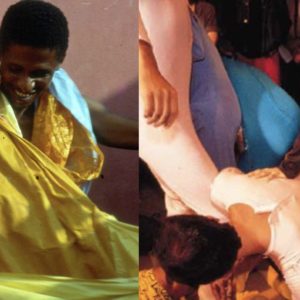
Design fictions are speculative scenarios about everyday use of new technologies. They are produced mainly by companies for branding their vision of the future, exploring popular imaginary and desires. Nokia Morph (2008), for example, is a short animation that shows how nanotechnology could be applied to cellphones to make them more flexible, durable and fashionable. Commercial fictions try to avoid the debate about negative effects with seductive imagery, borrowing from the aesthetics of well known Science Fiction films. This aestheticization of innovation works to naturalize new technologies, lowering cultural barriers to it’s adoption.
With very different purposes, students of the Interaction Design program at Royal College of Art (London) produce design fictions that are disturbing more than seductive. The 2010 Show features a kid suit that plays an alarm when strangers touch the kid, an electric belt that simulate menstruation for men and a device that teaches digital natives how to interact face-to-face with people. Each product has a concrete prototype and a set of movies that show how it would fit in social situations. Even tough they can be mass produced, they were not designed to shine at stores shelves. They were designed to appear in art galleries, where the public can simulate it’s uses and reflect about it. They call it Critical Design.
Of course there are also critiques about this approach. The public debate are limited to the small parcel of the population that goes to art galleries or read their publications.
We consider design fictions as a meta-medium to multiple dialectic relationship between technology and society. With the help of video, they employ technology prototypes to reflect on technology values. It’s a trendy new Industrial Culture format. It has been studied as a method for design, as a tool for marketing and as piece of art, but not like a communication phenomenon.
This research proposal is to study design fictions through the lens of Latin American Cultural Studies, in particular, adopting the ethnographic method applied by Jesus Martín-Barbero (1997) to study audience reception of Latin America soap operas.
This project, conducted between 2010 and 2014, generated an article in Digital Creativity and an online museum of design fictions.
